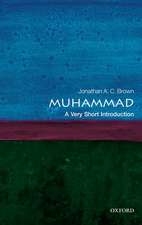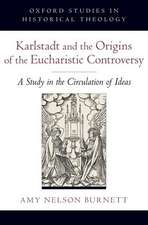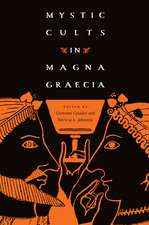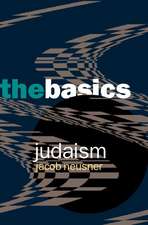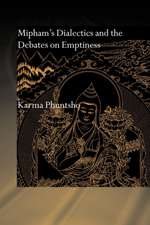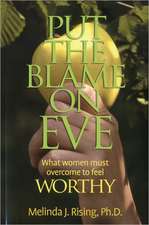The Signifying Creator – Nontextual Sources of Meaning in Ancient Judaism
Autor Michael D. Swartzen Limba Engleză Hardback – apr 2012
| Toate formatele și edițiile | Preț | Express |
|---|---|---|
| Paperback (1) | 164.23 lei 6-8 săpt. | |
| MI – New York University – 21 mai 2014 | 164.23 lei 6-8 săpt. | |
| Hardback (1) | 499.29 lei 6-8 săpt. | |
| Wiley – apr 2012 | 499.29 lei 6-8 săpt. |
Preț: 499.29 lei
Nou
Puncte Express: 749
Preț estimativ în valută:
95.56€ • 99.38$ • 79.96£
95.56€ • 99.38$ • 79.96£
Carte tipărită la comandă
Livrare economică 15-29 martie
Preluare comenzi: 021 569.72.76
Specificații
ISBN-13: 9780814740934
ISBN-10: 0814740936
Pagini: 132
Dimensiuni: 152 x 229 x 15 mm
Greutate: 0.34 kg
Ediția:New.
Editura: Wiley
ISBN-10: 0814740936
Pagini: 132
Dimensiuni: 152 x 229 x 15 mm
Greutate: 0.34 kg
Ediția:New.
Editura: Wiley
Recenzii
"In this remarkably concise, yet massively researched, volume, Michael Swartz lays the historical and hermeneutical foundations for a massive revision of the idea of late antique Judaism as an essentially text- and logocentric intellectual tradition. His elegantly written argument will challenge scholars - and, one hopes, their students - for years to come!" Martin S. Jaffee, University of Washington"With gestures to the music of John Cage and the meaning of fashion, Michael Swartz explores the manifold ways that ancient Jews believed God could speak through worldly things: animals and dreams, zodiac and temple, priestly vestments and the flowing of blood. Using such diverse sources as ancient synagogue mosaics and liturgical poetry, Swartz shows with economy and insight that formative Judaism looked well beyond the Torah to find divine intention." David Frankfurter, Boston University
"In this remarkably concise, yet massively researched, volume, Michael Swartz lays the historical and hermeneutical foundations for a massive revision of the idea of late antique Judaism as an essentially text- and logocentric intellectual tradition. His elegantly written argument will challenge scholars - and, one hopes, their students - for years to come!" Martin S. Jaffee, University of Washington "With gestures to the music of John Cage and the meaning of fashion, Michael Swartz explores the manifold ways that ancient Jews believed God could speak through worldly things: animals and dreams, zodiac and temple, priestly vestments and the flowing of blood. Using such diverse sources as ancient synagogue mosaics and liturgical poetry, Swartz shows with economy and insight that formative Judaism looked well beyond the Torah to find divine intention." David Frankfurter, Boston University
"In this remarkably concise, yet massively researched, volume, Michael Swartz lays the historical and hermeneutical foundations for a massive revision of the idea of late antique Judaism as an essentially text- and logocentric intellectual tradition. His elegantly written argument will challenge scholars - and, one hopes, their students - for years to come!" Martin S. Jaffee, University of Washington "With gestures to the music of John Cage and the meaning of fashion, Michael Swartz explores the manifold ways that ancient Jews believed God could speak through worldly things: animals and dreams, zodiac and temple, priestly vestments and the flowing of blood. Using such diverse sources as ancient synagogue mosaics and liturgical poetry, Swartz shows with economy and insight that formative Judaism looked well beyond the Torah to find divine intention." David Frankfurter, Boston University
Notă biografică
Michael D. Swartz is Professor of Hebrew and Religious Studies at the Ohio State University. His books include Scholastic Magic, Mystical Prayer in Ancient Judaism, Hebrew and Aramaic Incantation Texts from the Cairo Genizah (with Lawrence H. Schiffman), and Avodah: Ancient Poems for Yom Kippur (with Joseph Yahalom). He also served as Judaica Editor for the second edition of The Encyclopedia of Religion.
Descriere
Shows us how ancient Jews perceived hidden signs and read them, elaborating on their use of divination, symbolic interpretation of physical features and dress and interpretations of historical events


